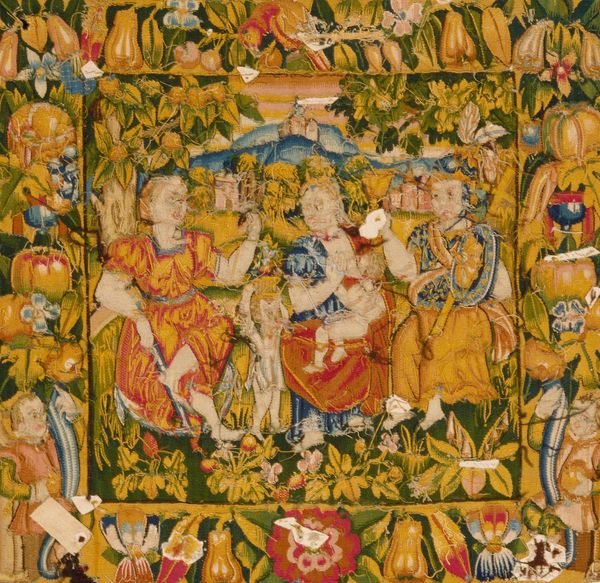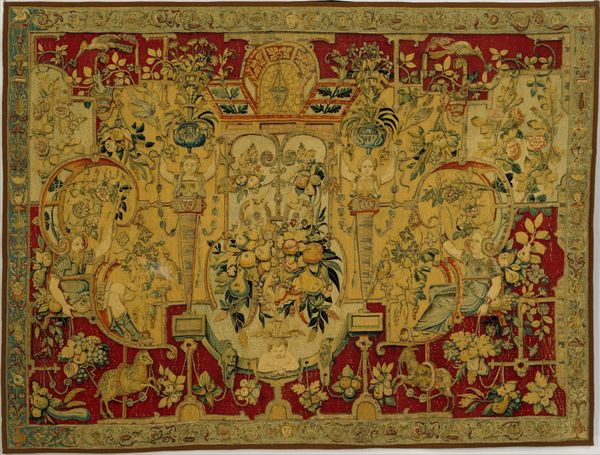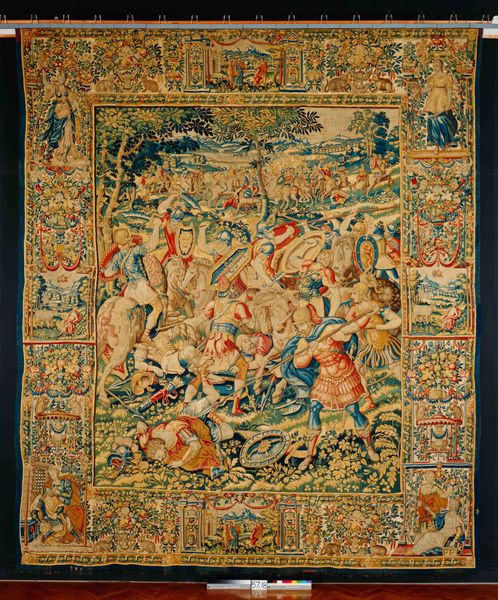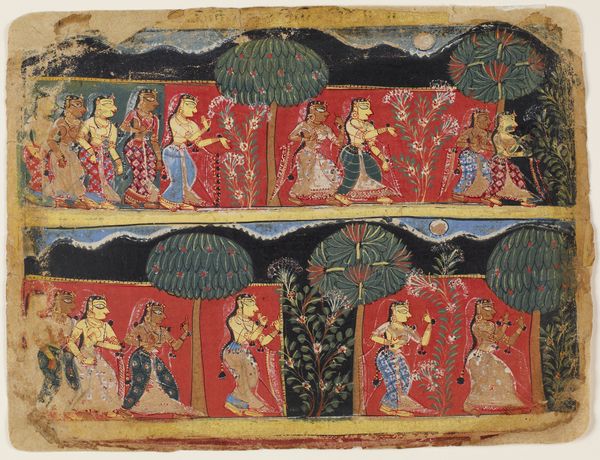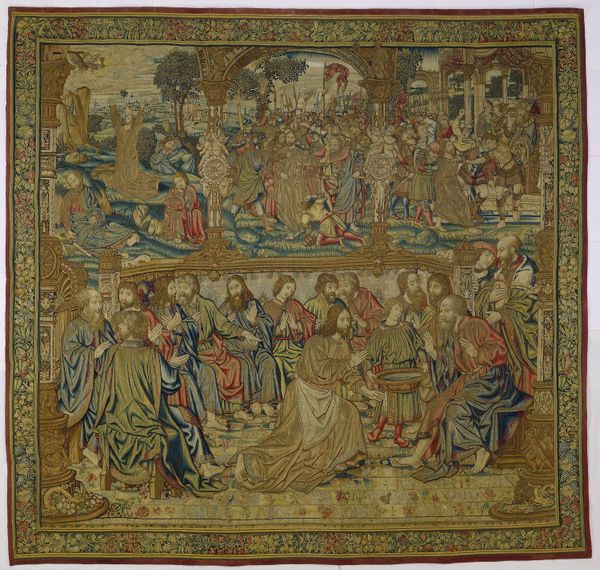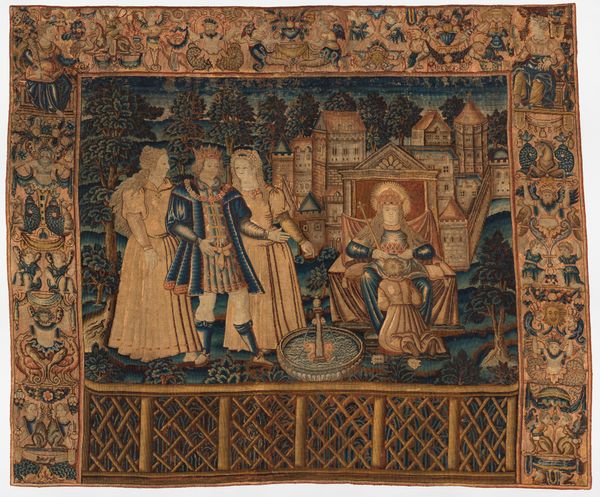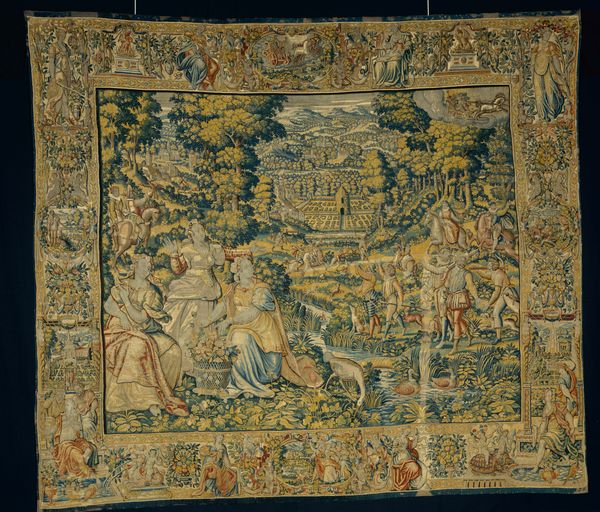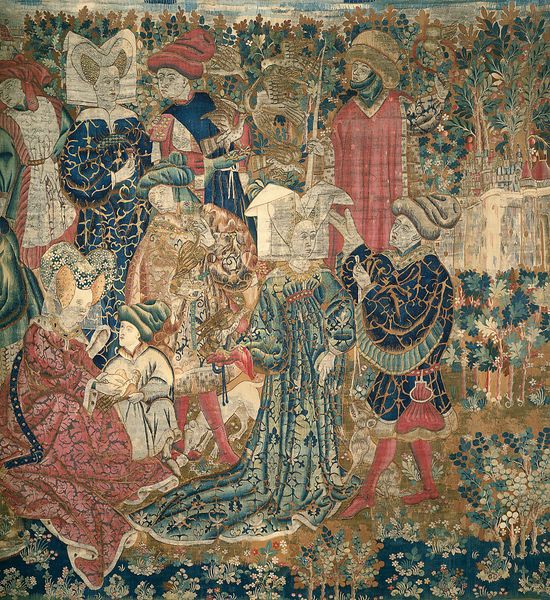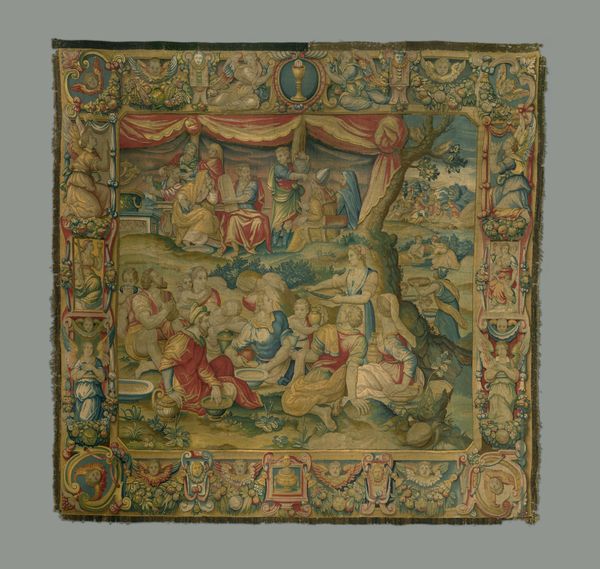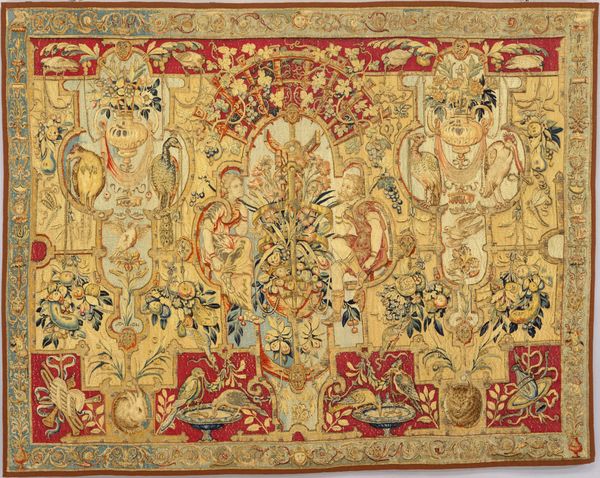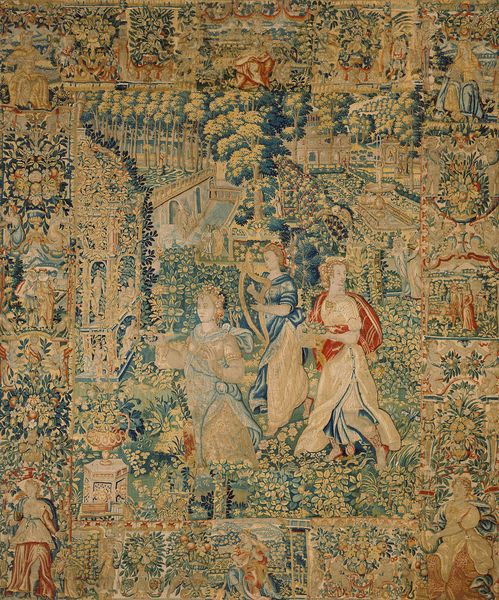
panel, textile, pendant
#
medieval
#
panel
#
narrative-art
#
landscape
#
textile
#
figuration
#
oil painting
#
genre-painting
#
pendant
Dimensions: 27 3/4 x 65 1/2 in. (70.49 x 166.37 cm)
Copyright: Public Domain
Curator: Before us, we have an extraordinary woven panel called "Country Wedding," believed to be from the 17th century. Editor: It strikes me as charmingly naive, a bit dreamlike, almost like a medieval fairytale tapestry. The palette is so soft. Curator: Indeed. It depicts a wedding celebration in a rural setting. Note the central placement of the wedding feast, draped elegantly under an awning, set amidst the wider scene of revelry. Consider, for example, the inclusion of sheep on the left of the image. It reminds the viewer of a society rooted in animal husbandry, and of the crucial economic reality facing most inhabitants of the world in 1600. The painting thereby legitimizes their joy! Editor: Yes, but focusing purely on its aesthetic construction: observe how the horizontal arrangement of figures, the flattened perspective, and the subtle use of color gradations creates a tapestry of light and shadow that leads the eye through the composition? Curator: It's crucial, however, to also read this piece as more than mere formal devices. The depiction of figures from different social classes – the gentry dining under the awning alongside laborers brings up complex questions about the function of marriage in cementing social bonds and hierarchies of its era. Do you see any brides, grooms, children, or are they purposely ambiguous? This reinforces our notion of "marriage" as it's function rather than for sentiment. Editor: From my perspective, it is impossible not to admire the craft involved in the weaving; the skill with which the figures and landscape are rendered. There's something compelling in its naive rendition of reality, and also the material processes by which meaning are delivered! Curator: Yes, but to reduce such objects of great skill into simple observations removes so much context from the original art and historical objects. It limits the potential for societal advancement from such knowledge. I only mention this briefly in response... Editor: It appears we have reached a fundamental divide; still I leave this discussion appreciating the piece from a deeper perspective than my initial viewing, in terms of narrative at least. Curator: Exactly! As a closing thought, I would observe how examining textiles enables us to understand broader historical contexts that include, but stretch beyond simply, the artwork in question!
Comments
No comments
Be the first to comment and join the conversation on the ultimate creative platform.
